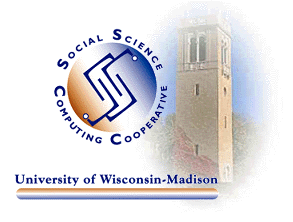
ELAINE and MARIAH to be Retired in April
Sluggishness of Internet
SSCC's Spring Training Schedule
Follow up to the "Income Tax Problem" SPAM
Tip on Improving SpamAssassin's Performance
Last month we announced our intentions of retiring our Tru64 UNIX computers and going with all Linux computers. To that end, we will be retiring ELAINE and MARIAH on April 30th. Since removing SAS on ELAINE and MARIAH last year, neither computer has seen much activity and their retirement should have no impact. With ELAINE and MARIAH gone, there will be two remaining Tru64 computers: HAL and NORMAN. HAL won't be retired until this summer after its replacement has arrived and been configured. NORMAN will be the last Tru64 computer retired because in order to retire NORMAN, we need to move SPSS to Linux which is fairly expensive.
Many of you have no doubt noticed how sluggish the Internet has been on occasion lately. This is a campus-wide problem caused by a small number of PCs (not in this building) compromised by the MYDOOM virus that were overloading the webcache system. This again reemphasizes the importance of good viral-protection practices and keeping systems updated. What's worse, Robert Hayden, DoIT Network Engineer, reports that "With more and more machines connected at 100mb (and many more moving to gigabit connectivity), it's possible for a single [compromised] box to significantly saturate the link going into a building or even an isolated section of campus. Add to that more-sophisticated attacks designed to exhaust protocol resources and that one unpatched NT server setting under someone's desk will impact everyone."
Rest assured that SSCC does everything it can to keep security threats to a minimum by using a combination of initiatives including a firewall device, e-mail filtering at the server level, and automated delivery of patches and virus updates to PCs on the PRIMO domain. Soon we will be implementing software called NetReg for further improving network security in the Social Sciences Building. NetReg will help us avoid situations like we experienced last fall when some building occupants unknowingly brought in infected PCs from home and began to spread the Blaster and Welchia worms to the "safe" computers behind SSCC's fire wall. The software will also prevent unauthorized people who may have malicious intent from entering the building and gaining access to the network.
SSCC's Spring training is now underway, but there's still space in many classes. Visit SSCC's training web pages for a complete list of classes and registration information. Remember that all SSCC training sessions require preregistration.
We got a lot of calls earlier this month from SSCC members who received multiple messages (30-40) whose subject line was "The IRS has an Income Tax Problem." The message was sent to many state employees and propagated as some people responded to the message (usually via an automated vacation message) which then got sent back to the entire list. According to an article in The Wisconsin State Journal, the message was sent by a "tax protester" and there was probably nothing illegal about it. The account from which the message was sent has since been deleted by the Internet Service Provider (ISP) for violating the terms of use by sending unsolicited bulk email
If you have set up SpamAssassin to help filter out your junk email, you have probably noticed that a number of new mailboxes appeared in your list. They are "spam", "not spam", and "not legit." They each have a different purpose, and using them will help SpamAssassin learn what you consider spam more quickly.
First things first - let's make sure you can see those mailboxes. In Eudora, Refresh your mailbox list - you have to do it twice for them all to show. In Squirrelmail, go to the Folders page and add those three folders to the ones you want visible. In Outlook or Outlook Express, use Tools : IMAP Folders to subscribe them.
Now that you can see these folders, what are they good for? The "spam" folder is where SpamAssassin puts things that it considers spam, and you should empty it out once in a while just so it doesn't get too full - and who wants to keep all that junk mail anyway? Also, you should check periodically to be sure nothing ended up in the "spam" folder that you don't actually consider to be spam. If that happens, transfer the message to your "not spam" folder so SpamAssassin can learn that it's not really spam. This information is "harvested" every night, and afterwards the message is restored to your Inbox.
The last mailbox is the "not legit" mailbox. This is where you can put messages that were not picked up by SpamAssassin, but that you consider to be spam. SpamAssassin will "harvest" these messages nightly to learn what you want filtered, and then will delete the message.
SpamAssassin starts out with a good idea of what is spam and what is legitimate email, but by using these added mailboxes, you will help improve its performance. For more information on SpamAssassin, read SSCC's publication, Filtering Your Email with SpamAssassin.
Go to previous editions of
SSCC News.
Go to the SSCC Home Page.
© 2004 University of Wisconsin Social Science Computing Cooperative